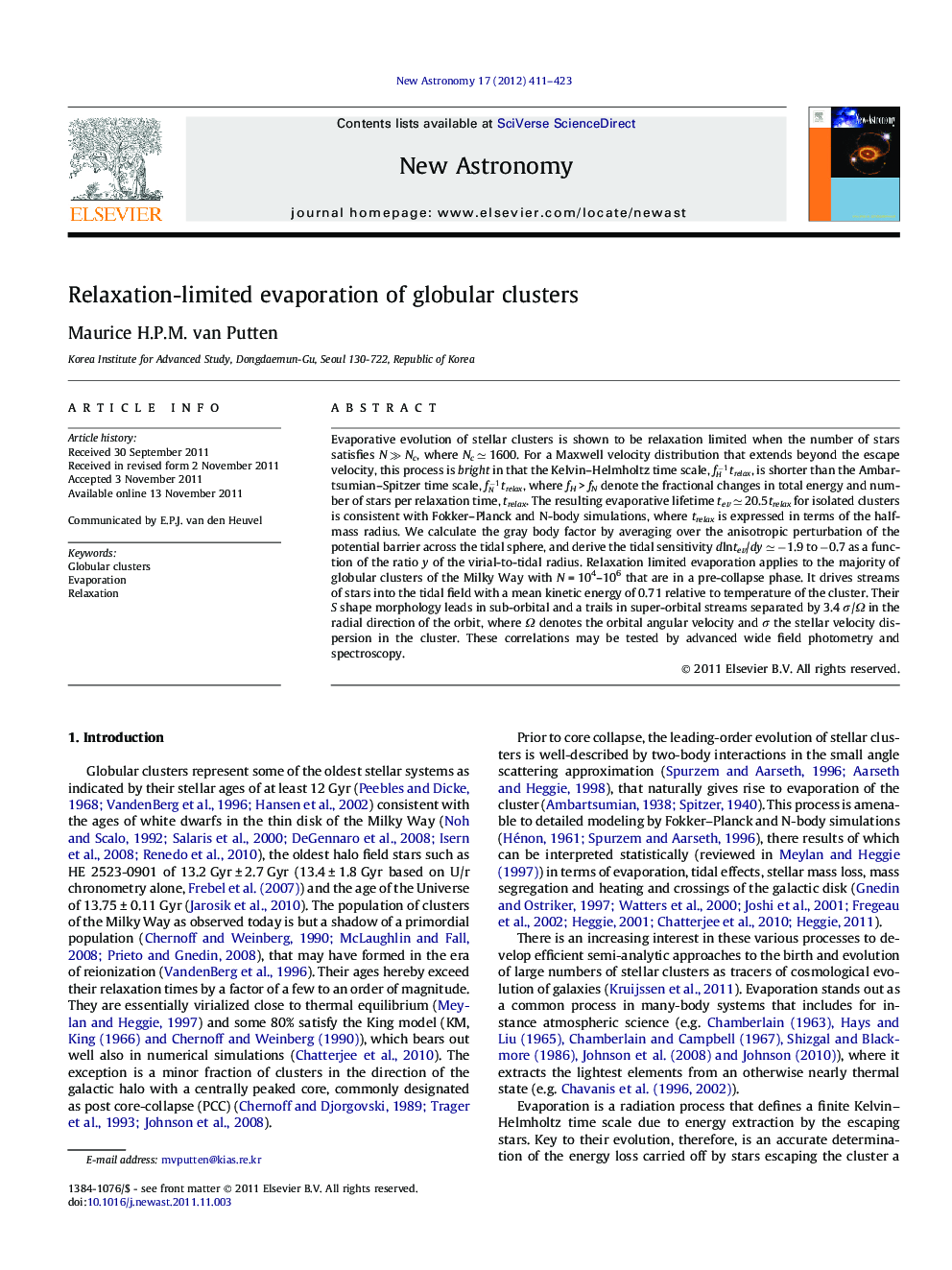| کد مقاله | کد نشریه | سال انتشار | مقاله انگلیسی | نسخه تمام متن |
|---|---|---|---|---|
| 1779285 | 1021988 | 2012 | 13 صفحه PDF | دانلود رایگان |

Evaporative evolution of stellar clusters is shown to be relaxation limited when the number of stars satisfies N ≫ Nc, where Nc ≃ 1600. For a Maxwell velocity distribution that extends beyond the escape velocity, this process is bright in that the Kelvin–Helmholtz time scale, fH-1trelax, is shorter than the Ambartsumian–Spitzer time scale, fN-1trelax, where fH > fN denote the fractional changes in total energy and number of stars per relaxation time, trelax. The resulting evaporative lifetime tev ≃ 20.5trelax for isolated clusters is consistent with Fokker–Planck and N-body simulations, where trelax is expressed in terms of the half-mass radius. We calculate the gray body factor by averaging over the anisotropic perturbation of the potential barrier across the tidal sphere, and derive the tidal sensitivity dlntev/dy ≃ −1.9 to −0.7 as a function of the ratio y of the virial-to-tidal radius. Relaxation limited evaporation applies to the majority of globular clusters of the Milky Way with N = 104–106 that are in a pre-collapse phase. It drives streams of stars into the tidal field with a mean kinetic energy of 0.71 relative to temperature of the cluster. Their S shape morphology leads in sub-orbital and a trails in super-orbital streams separated by 3.4 σ/Ω in the radial direction of the orbit, where Ω denotes the orbital angular velocity and σ the stellar velocity dispersion in the cluster. These correlations may be tested by advanced wide field photometry and spectroscopy.
► We identify a regime of relaxation-limited evaporation of globular clusters.
► We study the sensitivity of the evaporative lifetime to energy loss.
► A relatively short Kelvin–Helmholtz time is found to agree with numerical simulations.
► We propose measuring correlations between cluster temperature and tidal tails.
► These observations may be pursued by the LSST and BigBOSS.
Journal: New Astronomy - Volume 17, Issue 4, May 2012, Pages 411–423